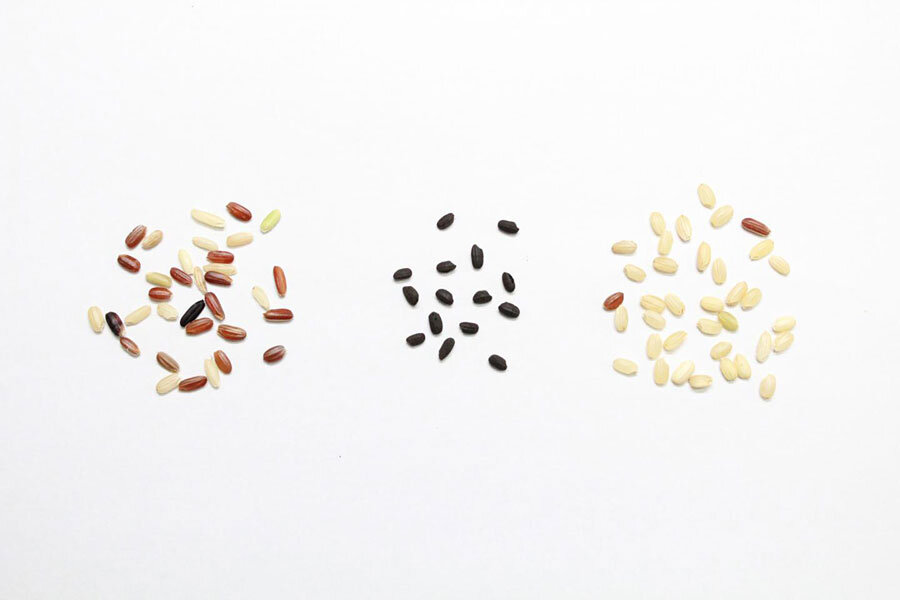Scientists probe ancient grains of rice and are surprised by what they find
Loading...
Rice is a staple gracing billions of plates across the globe today. But the origins of the popular domesticated grain have long been shrouded in mystery.
In an effort to glimpse the past use of the cultivated cereal, a team of scientists dug into the genome of grains of rice excavated from archaeological sites in Japan and Korea, and the research team's ancient DNA analysis revealed that these 950- to 2,800-year-old grains of rice weren't exactly what they expected.
The rice farmed in archaic Japan and on the Korean Peninsula was surprisingly diverse, according to the team's paper published Tuesday in the journal Molecular Biology and Evolution. And this suggests that the cultivated crops were being moved long distances.
The kernels of Asian domesticated rice, Oryza sativa, that make it onto plates today are largely of two main varieties: O. sativa japonica and O. sativa indica. Today japonica, the short, sticky rice often used for sushi, is largely cultivated in dry fields of northern and eastern China, Japan, and on the Korean peninsula. Indica, the non-sticky, long-grained variety, prefers to grow submerged in water across the tropics.
Scientists thought that japonica varieties were the only domesticated rice to grow in northern China, Japan, and on the Korean peninsula. But the genetic markers that this research team, led by Masahiko Kumagai at the University of Tokyo, looked at weren't all a match for japonica. Instead, some seemed to be more genetically similar to indica.
"If you had asked me at any point previous to reading this paper, I would've said that there was no way that you would find indica in those locations," Briana Gross, a plant geneticist at the University of Minnesota Duluth who was not part of the study, tells The Christian Science Monitor in a phone interview.
But "there are written records mentioning the existence of rice variety having indica-like name originated from China in feudal Japan," Dr. Kumagai writes in an email to The Christian Science Monitor. "Here, we confirmed the existence of indica-like rice 950 years ago in Japan with DNA … So, this might be a wisdom of ancient farmers."
Determining which varieties of rice were used in various parts of ancient Asia could help scientists "better understand the life of ancient people in Asia," Kumagai says.
Scientists know little about the movement of rice among different ancient civilizations, whether it was by trade or by being carried to a new locale, Dr. Gross says. Most of the discussion had centered around rice moving from eastern Asia to southeastern Asia rather than northward, she explains. "This study points out that we need to consider that [other direction] when we think about the history of rice."
Understanding that rice could have been being traded among far-flung civilizations over 2,000 years ago could help scientists better understand how domestic rice has evolved.
"The picture we're getting is that the story of rice is much more complicated than we had originally thought," Michael Purugganan, the Dean for Science at New York University who was not part of the study, tells the Monitor in a phone interview.
What happened to winnow down the diversity of rice grown in northern Asia?
Dr. Purugganan suggests that climate might have had something to do with it. Perhaps as farmers began to plant rice in new areas, they tried "everything they could get their hands on," he says. But, as the evolving domestic crops adapt to a new environment, the best adapted varieties become the choice crop for farmers. So that might explain why today no indica-like varieties are grown in Japan or on the Korean peninsula and the more temperate-adapted japonica rice abounds.
Although the data added by this new study "does expand our view" of the range of indica rice in the past, Susan McCouch, a rice geneticist at Cornell University who was not part of the study, tells the Monitor in a phone interview, "It doesn't conclusively address the main questions that are being debated in the rice community today."
Those questions revolve around the initial domestication event, and just how unique it might have been.
Was rice domesticated once, and then the crop spread? Or did humans figure out how to farm the cereal crop in multiple places independently? Scientists still aren't sure.
Some have suggested that japonica rice was domesticated in the Yangtze River Valley more than 8,000 years ago, and there is evidence of domesticated indica rice as far back as 5,000 years ago in India. But it has been debated whether those were separate, independent domestication events, or whether they are somehow offshoots resulting from a single community in a single place that domesticated rice. Some models even suggest three distinct domestication events.
Gross and colleagues have suggested a more complicated story: that indica is actually a product of the genetic mixing of domesticated japonica rice and a wild variety in India.
"It's a very interesting debate in the rice community," Dr. McCouch says. "Partly people want to know how many times a crop was domesticated independently by groups of people that weren't in contact with each other as a fundamental, anthropological question."
"But people also want to know where," she says, and "there's a lot of nationalism tied up with that."
If there was a single origin of rice, say, in China rather than in Bangladesh or Nepal, Gross explains, it could have "interesting political implications … Rice is a very important crop," she says, "People take a lot of pride in the rice that's grown in their countries."








